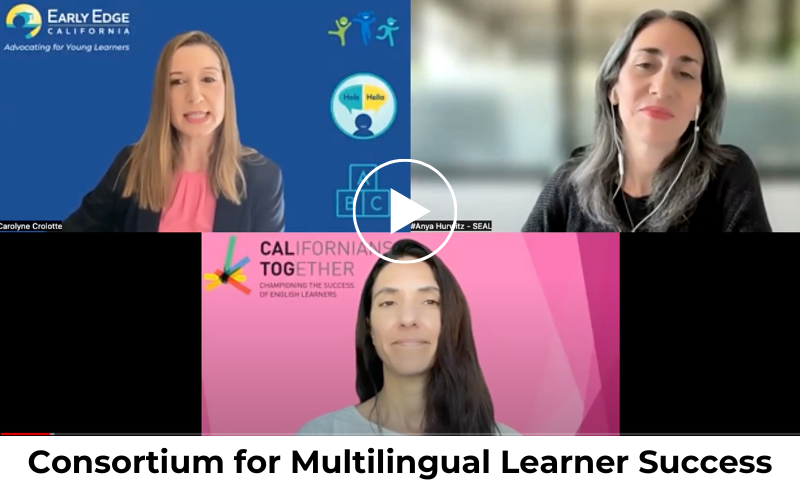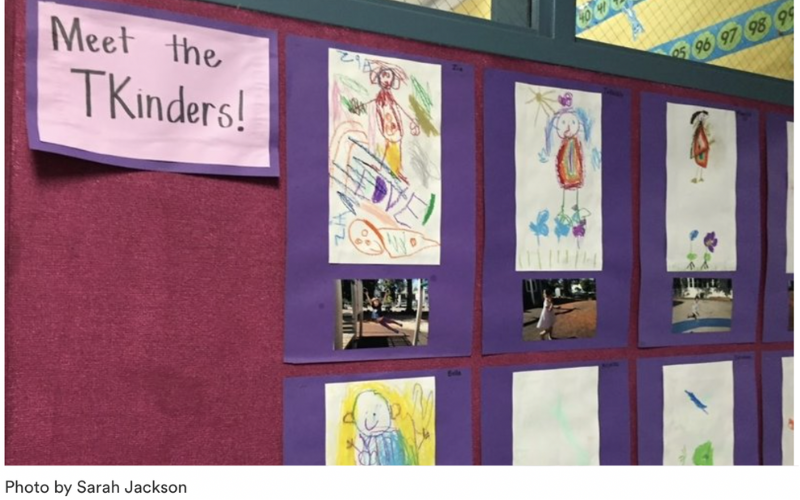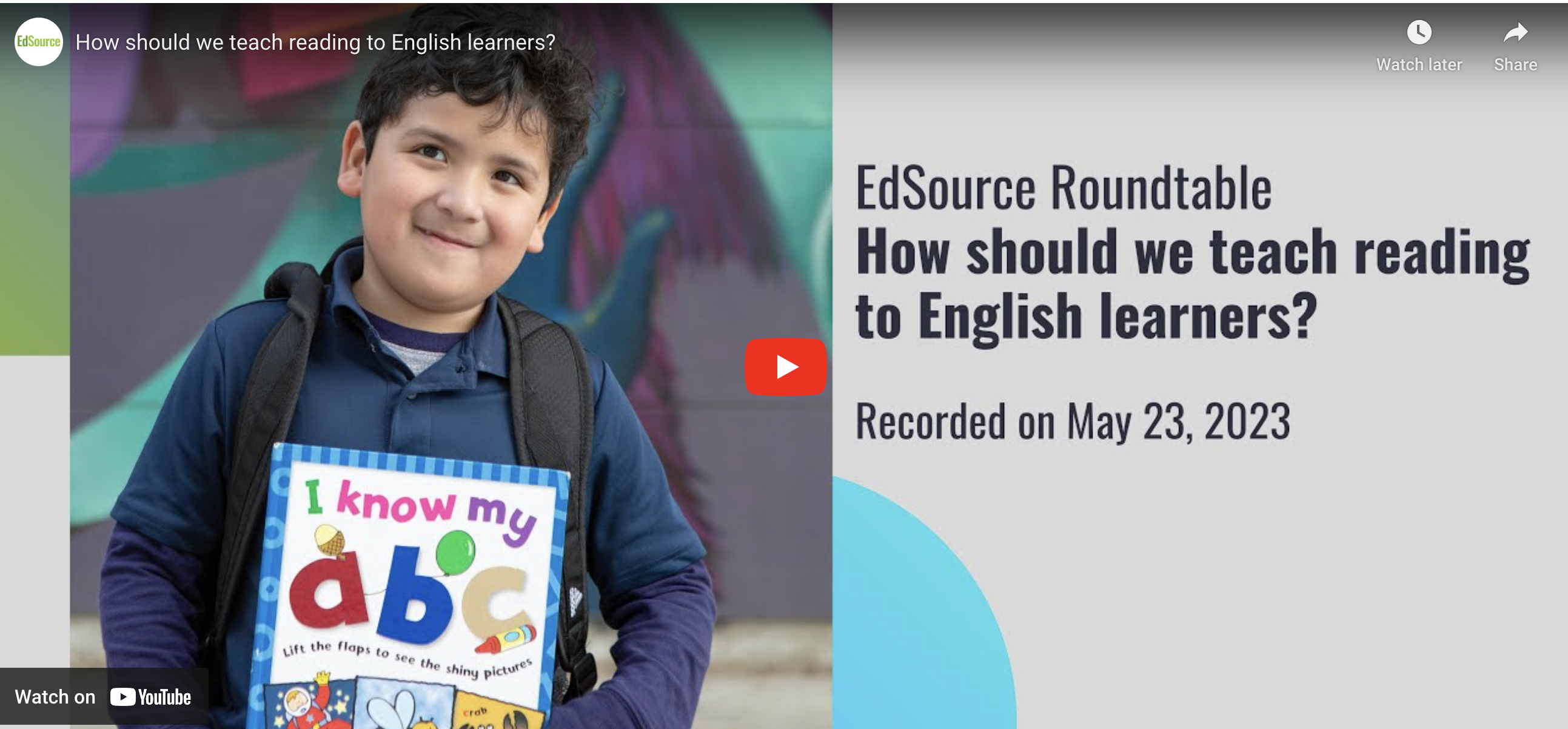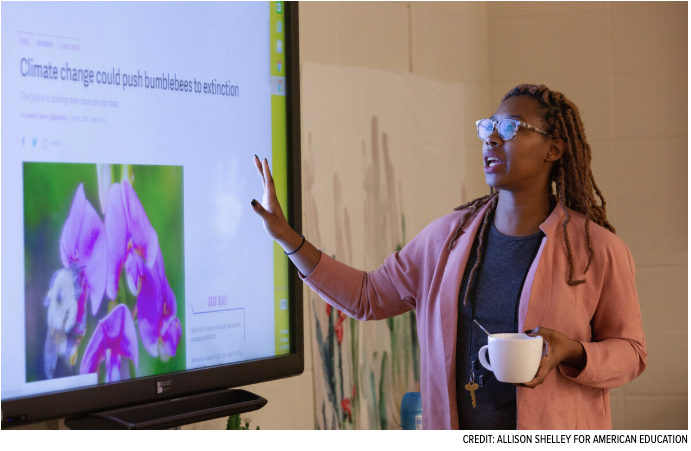Empowering Dual Language Learners Through Transitional Kindergarten Expansion
Patty Chavez2024-04-02T11:08:13-07:00TK Expansion and Dual Language Learners
In a world rich with diversity, our educational systems must reflect the richness of languages and cultures our children bring into the classroom. Recently, the Consortium for Multilingual Learner Success came together to discuss the expansion of Transitional Kindergarten (TK) programs, with a particular focus on nurturing multilingual learners. Moderated by Early Edge California’s Carolyne Crolotte, the discussion convened experts to explore the transformative potential of expanding Transitional Kindergarten (TK) programs to empower multilingual learners in California. The discussion was rich with insights, strategies and calls to action aimed at creating equitable educational opportunities for all children, regardless of linguistic background.
Panelist Dr. Anya Hurwitz from SEAL (Sobrato Early Academic Language) emphasized the need to center multilingual learners in educational initiatives. Anya’s insights set the stage for a discussion on the challenges and solutions surrounding TK expansion. Panelist Liz Alvarado from Californians Together highlighted the shortage of bilingual teachers and the need for comprehensive approaches to address workforce shortages. The state’s announcement of a $20 million budget allocation for bilingual teacher professional development grants provided a ray of hope, signaling progress in this critical area.
Throughout the webinar, panelists emphasized the transformative power of dual language immersion programs in TK expansion. These programs not only enhance language proficiency but also improve academic outcomes and foster cultural affirmation. The discussion also addressed systemic challenges such as language loss and inadequate classroom design, while offering potential solutions and advocating for systemic changes. From integrating language and content knowledge development in teacher preparation programs to fostering partnerships with newcomer families, the panelists outlined actionable strategies to drive positive change.
“So when a four year old comes into school, a brand new TK student comes into school for the first time, and when they’re told both explicitly and implicitly to leave their language and culture at the door . . . that language loss begins immediately. When we have not adequately designed our classrooms or schools and our systems, that child will very likely begin opting to respond to their own family members in English, and that can happen within days. A young child is brilliant. We know this. They learn quickly and will deeply understand unequal language status. So dual language programs inherently dismantle that very real trajectory and create culturally and linguistically affirming early learning that supports socio emotional and of course academic success.” – Dr. Anya Hurwitz
“… one thing that I will mention that I don’t think we’ve mentioned today is that that integrated delivery of language and content together is really best done in an early childhood education classroom for thematic instruction and math. And so this sometimes is contrary to the adoption of a curriculum where it’s giving you lessons, but we need to take those lessons and apply them into our thematic instruction to really integrate and engage kids in their learning in those playful ways that help them make deep meaning and connections with language and content.” – Liz Alvarado
Thank you to Alliance for a Better Community and the Consortium for Multilingual Learner Success Advisory Committee for hosting this convening. A full recording of the discussion can be viewed HERE.
By prioritizing culturally and linguistically affirming practices, investing in bilingual teacher development, and driving systemic change, we can create an educational landscape where every child has the opportunity to thrive. Together, let’s embrace the power of possibility and pave the way for a brighter future for all children in California and beyond.
______________________________
The Consortium for Multilingual Learner Success is composed of nearly 100 civil rights, policy, research, philanthropic, educator and community based organizations, all working to strengthen the prosperity of California and Los Angeles County by advocating for an education system that fully supports and embraces the assets of multilingual students. SEAL is a proud member. To subscribe to the Consortium’s updates click HERE.




